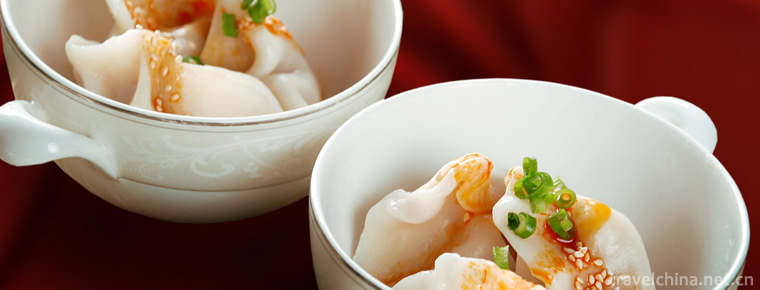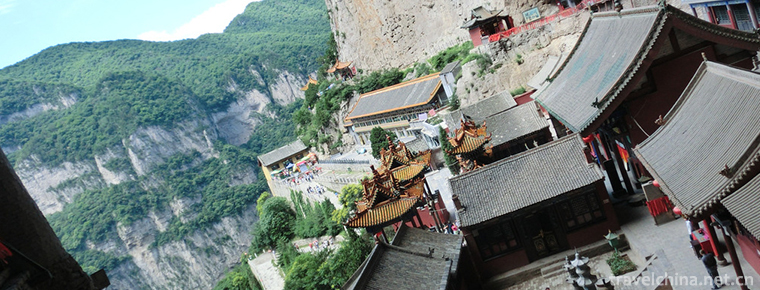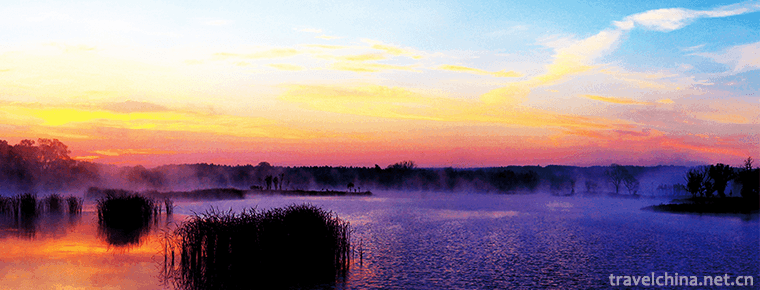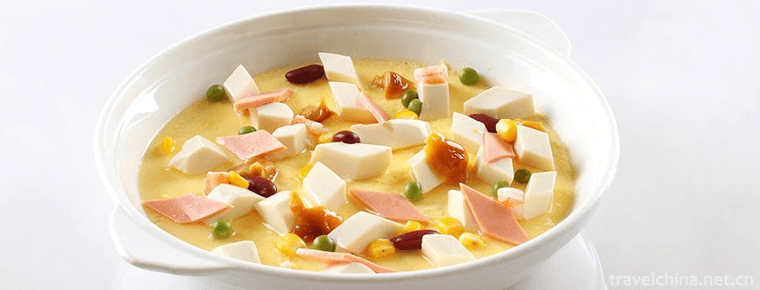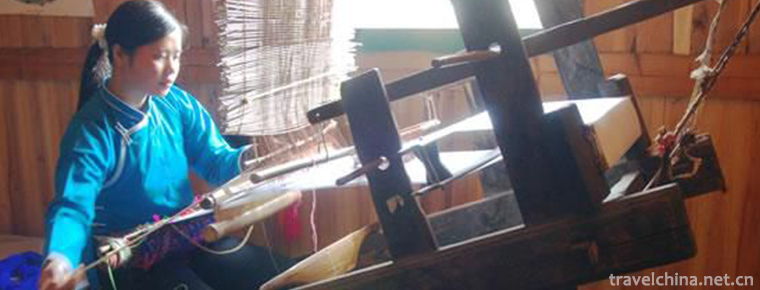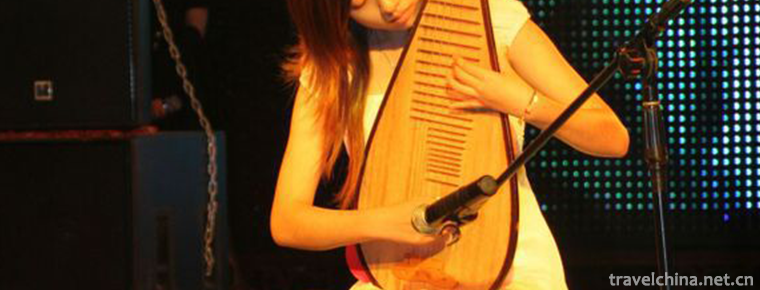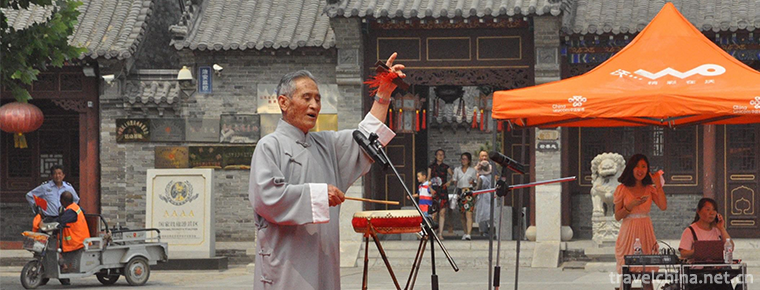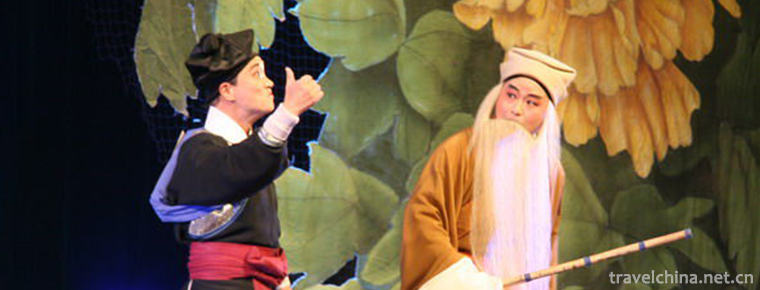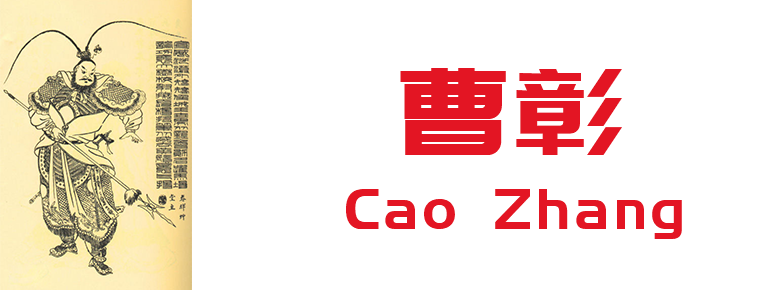Jixi Longchuan Scenic Area
Jixi Longchuan Scenic Area in Xuancheng City, Anhui Province, is a national AAAAA-level Tourism Scenic Area officially approved by the State Tourism Administration. It is located in Longchuan Village, Jixi County, Southern Anhui Province. It is an ancient village with a thousand-year-old Hu family name.
Longchuan Tourist Scenic Spot combines human landscape with natural landscape. Hu's ancestral temple is the first ancestral temple in the south of the Yangtze River. It is known as "Wood Carving Art Museum" and "National Art Palace". Yishi Shang Bookstore is an authentic stone carving archway in Ming Dynasty and the most important stone carving of Hui School.
In 1988, it was awarded the National Key Cultural Relics Protection Unit ; in 1986, it was awarded the Key Cultural Relics Protection Unit of Anhui Province . In March 2017, it was appraised as a national scenic spot.
Located 11 kilometers east of Jixi County, Xuancheng City, Anhui Province, Longchuan Village is composed of three villages, namely, Hangkou, Huli and Hengchuan. The village is a typical mountainous village with eight mountains and rivers, one field, one road and manor.
topographic features
Longchuan is situated in a small basin surrounded by mountains. Its topography and physiognomy are dominated by low and middle mountains and hills, surrounded by mountains, with the highest peak of Longxu Mountain at 1048 meters above sea level. The terrain of the village is like a boat landing on the shore, with Longxu Mountain towering in the East and Dengyuan River in the south, Longchuan River flowing in the east, Fengguan Peak in the West and high mountains in the north.
Climatic characteristics
The Jixi Longchuan Scenic Area in Xuancheng City, Anhui Province, has a subtropical humid monsoon climate, with an average annual temperature of 15.9 C, a mild humidity in spring and autumn, an average temperature of over 22 C in summer and a simultaneous rainfall and heat period, and an average temperature of less than 10 C in winter. Four seasons are distinct, the best time to travel is spring and autumn.
Longchuan, China, has beautiful mountains and rivers and outstanding people. Longxu Mountain in the east, Shihu Mountain in the west, Tianma Mountain in the south, Dengyuan River in Hebei Province, Longchuan River flows east around the village, into Dengyuan River, forming a village mouth; the village is like a boat, like a dragon boat out of the sea, it can be called a treasure land of geomantic omen. On both sides of Shuijie in the scenic area, ancient dwellings are in a row, villages and alleys are quiet and secluded, with white walls and daiwa, high horses'heads and a school of Huizhou ancient village implications. Hu's ancestral temple, Yishi Shang Bookstore and Hu Bingheng House, the key national cultural relics units, are among the top three carvings of Hui School. Hu's ancestral temple is renowned for its "Wood Carving Art Palace" and "the First Ancient Temple in the South of the Yangtze River", in which the preserved wood carving "Four Graphics" (Harmony, Harmony, Beauty, Harmony) becomes the symbol of a harmonious society; Yishi Shang Bookstore is a stone archway in the flourishing Ming Dynasty, becoming a typical representative of the Hui School of Stone Carving; Hu Bingheng House of Huizhou merchant (not open) is the original place. The juice preserves the old appearance of Huizhou ancient folk houses and faithfully records the history of a generation of tea merchants.
The Anti-Japanese Memorial Hall (Shaobaofu) truly records the anti-Japanese merits of Hu Zongxian, the commander-in-chief of the Ming Dynasty, who first marked Diaoyu Island on China's coastal defense map. Chengxintang Paper Workshop in Longchuan, which is a relic of intangible culture, is out of print in China. The Xianci Temple reflects the outstanding humanities of Longchuan, a village of Jinshi, since the Jin Dynasty. The Memorial Hall of Huizhou merchants located next to Hu Bingheng residence of Huizhou merchants concentrates the history of Huizhou merchants in Jixi County, especially the history of Hu merchants in Longchuan.
Longchuan Village is an ancient village with a history of more than 1600 years. This is a barren river beach full of yellow wattle, which is called Jinglin because of its rich gold (wattle) honey. In 318 A.D., Hu Shun led his troops in the town of Shezhou by a regular attendant on a scattered horse. In the three years of Xiankang (337 A.D.), Hu Yan visited Huayang Town, where he saw the terrain of "East Towering Dragon Peak, West Standing Cockscomb, South Tengma Pentium up, North Changxi (Dengyuan River) winding, envying its beautiful mountains and waters, he went to Jinglin, the mouth of Longchuan, and lived together" (Longchuan Hu genealogy). Hu Shu became the ancestor of the Hu family in Longchuan.
In the second year of Tang Yongtai (766 AD), Jixi County was located in Huayang Town, Shexian County, which belongs to Longchuan County. In the past dynasties, the subordinate relationship between Huizhou Prefecture and Jixi County often changed, and Longchuan belonged to it.
The Ming Dynasty was the heyday of Longchuan Village's development. The village had a large population and developed economy. It attached great importance to imperial examinations and became a famous "Jinshi Village". There were more than ten scholars among them, the most famous of whom were Wuxu scholars in the fourteenth year of Chenghua Ming Dynasty (1478 A.D.), Shaobao, the official to Prince, and Hu Fu in Shangshu, the Ministry of Household Affairs of Nanjing. Sixty years later, in the seventeenth year of Jiajing in Ming Dynasty (1538 A.D.), Hu Zongxian, a sergeant of the Wuxu Section, came to Shangshu of the Prince Taibao Military Department. During the peak period of the Ming Dynasty, the village buildings basically covered the whole range of Longchuan "boat-shaped village".
Since the Qing Dynasty, Longchuan has gradually declined, the villagers'official career is no longer as prominent as the Ming Dynasty, the population is slowly decreasing, many buildings are gradually collapsed, and the coverage of village buildings is gradually reduced from the whole boat-shaped village to the main settlement in the north of Longchuan.
In the new century, the people's government of Jixi County, in accordance with the documents and regulations of the state and provincial governments concerning the protection of famous historical and cultural cities, formulated a "protection plan" around Longchuan Shuijie for Longchuan Village, which combines the historical protection of Shuijie and ancient villages with the socio-economic development, the construction of village infrastructure and the improvement of residents'living conditions. To adapt to the construction of a well-off society and the development of tourism.
Jixi Pecan
Carya cathayensis ripens before and after dew every year. It belongs to pure wild fruits and natural green food. It is also one of the most nutritious varieties of dried fruits in China.
Jixi dried bamboo shoots
Dried bamboo shoots are dried products of young bamboo shoots, which are essential ingredients for traditional dishes. Jixi Green Bamboo Shoot is a treasure of wild non-polluted food because of its unique delicacy and high nutritional value.
Rain tea in Jinshan
When it rained in Jinshan, it was a top-grade green tea. It was founded in Qingdaoguang. Its original name was Jinshan Mingfog and tribute. It was produced in Jinshan, Shangzhuang Town. Shiyu is a synonym for a famous tea in southern Anhui Province. It is named Shiyu in Jinshan Mountain. It is produced in Mr. Hu Shi's hometown.
Jixi green tea
Jixi Green Tea picking period is the annual Qingming Valley Rain, picking the first fat and tender buds, hand-fried.
Dried shrimp, rice and tofu
Du-shaped shrimp-rice tofu dried, can be cut into thin filaments or thin slices, tear open to see fine texture, there is a shrimp. It can be served as a snack, as well as a tea with wine, as a ingredient for dishes.
Hu Shi's pot
Ancient Huizhou Jixi Lingbei area festival, entertainment, wedding celebration of a major dish, but also Hu Shi's life's favorite dish. When Hu Shi was president of Peking University, he entertained Jixi's son-in-law, Mr. Liang Shiqiu, with a tasty pot, which was praised as "a tasty pot with many colors on three or five or seven floors, tastes good and leaves the table without leaving the pot".
On April 8, 2012, the preliminary evaluation of "Famous Street of Chinese History and Culture" sponsored by the Ministry of Culture and the State Administration of Cultural Relics was unveiled, among which Longchuan Water Street was listed.
In October 2012, the Longchuan scenic spot in Jixi, Anhui Province, was ranked as the 5A-level scenic spot by the National Tourism Administration.
On the morning of November 12, 2012, the unveiling ceremony of Longchuan Scenic Spot in Jixi, Anhui Province was grandly held in Longchuan Reception Center Square. Longchuan 5A Scenic Spot was successfully established.
In November 2013, Longchuan Village, Yingzhou Town, Jixi County, was selected as "Beautiful Livable Town Village in China".
On December 22, 2014, the overall maintenance project of the Hu ancestral temple in Longchuan, Jixi, was officially unveiled and entered the stage of project implementation after full demonstration, evaluation and detailed scheme approval.
In March 2017, Jixi Longchuan Scenic Spot was named National Scenic Spot.
Longchuan Hu ancestral temple is located in Hangkou (Longchuan) village, Yingzhou Town, Jixi County. Jixi belongs to Huizhou in ancient times. Its style of writing is flourishing and its ancestral temples are all over the country. The Hu ancestral temple in Longchuan was built in Jiajing in the Ming Dynasty (1547) and rebuilt in Guangxu in the Qing Dynasty (1878). The ancestral temple is situated in the north and faces the south. It moves forward three times and covers an area of 1729 square meters. It is full of mountains and rivers, flying with momentum. The temple is beautifully decorated, especially the well-preserved wood carvings, known as the "treasure house of Hui School wood carving art". Longchuan had published six Shangshu books for two terms in the Ming Dynasty. It was also the hometown of Hu Jintao. In 1988, Longchuan was listed as a national key cultural relic protection unit. Experts praised it as a unique ancient temple in China. It is the ancestral hall of Hu Fu, Shangshu Zongxian of the Ming Dynasty, and Hu Guangyong, a red-topped businessman of the Qing Dynasty. In addition, there are 49 cultural relics and historic buildings in Longchuan Shuijie and its vicinity, namely Yishi Shang Bookstore, Hu Bingheng's former residence, Jinshi Lane, Lingshan Temple, Fang's ancestral temple, Shangshufufang, Longfeng Chanyuan site, Jinshixiang ancient well, Tangwu site, Runmachang site, ancient official road, Shuibei site, Ding's ancestral tomb, Hufu tomb, etc. Hu Zongxian's Tomb, Hu Bingheng's Tomb, Huli Water Lane, Huli Sanyangjing, etc.
The cultural relics of Longchuan in Jixi are well protected. For example, the water street in Longchuan Village has been kept intact for hundreds of years, which is inseparable from the establishment of corresponding water street protection measures in this village since the Ming Dynasty.
After the reform and opening up, especially in the past ten years since 1997, the enthusiasm and initiative of Longchuan Shuijie residents to participate in the protection and transformation of Shuijie has greatly improved. After liberation, especially during the period of "Cultural Revolution", the style and features of Shuijie were greatly damaged. The ancient houses and archways along the banks of Longchuan River were demolished to varying degrees. After 1997, according to the principle of "repairing the old as the old", the water street has been transformed into a major restorative protection.
Yishi Shang Bookstore, a provincial key historical protection unit in Anhui Province, stands in the middle of Shuijie Street. It is a relic of the Ming and Jiajing periods. Its prosperity still exists today. However, due to the erosion of centuries of history, especially the man-made damage during the Cultural Revolution, archways have begun to tilt.
In order to protect the most exquisite stone carving archway in Ancient Huizhou, Hu Youming, a Longchuan villager, and other households took the initiative to cooperate with the demolition of the original residential buildings built close to the archway, which enabled the smooth implementation of the protection measures of the archway, and made room for the archway, restored the grandeur of Yishishan Book Archway, and became the most beautiful one in Longchuan Shui Street. A scenic line.
In order to restore and rebuild Shao Bao Fu (Hu Zongxian Shao Bao Fu) and build Hu Zongxian Memorial Hall against Japan, Hu Yijian, General Secretary of the Party Branch of Longchuan Village Committee, vacated his own house to make up a square garden for the "Hu Zongxian Memorial Hall against Japan". He said: In order to resist Japan, my ancestors spared no expense in their lives, as future generations, to contribute to the ancestor's Memorial hall, it is also appropriate. His house, facing the street, is a very good commercial pavement. More than 100 square meters of space have been vacated for the use of the Hu Zongxian Memorial Hall, which makes the Shaobao Prefecture integrated with it. The whole village and the relevant departments have made every effort to protect the historical relics and buildings around them, forming a good atmosphere for the protection of cultural relics, and achieved fruitful results.








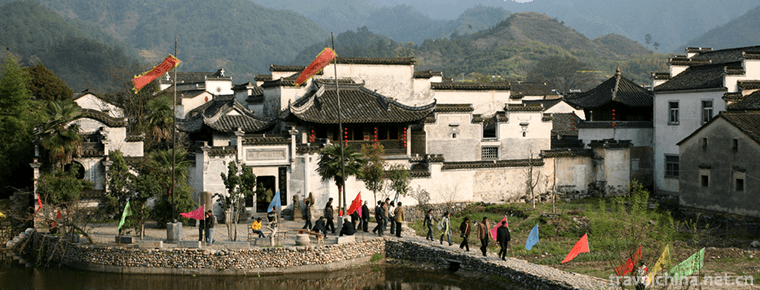
-
Mianshan Scenic Area
Mianshan Scenic Spot is a national AAAAA class tourist attraction, a key scenic spot in Shanxi Province, the birthplace of Ching Ming Festival (Cold Food Festival),.
Views: 298 Time 2018-11-24 -
jingyuetan national forest park
Jingyuetan, National AAAAA Class Tourist Scenic Spot, National Scenic Spot, National Forest Park, National Civilized Scenic Spot Demonstration Site, National Water Conservancy Scenic Spot, National Na.
Views: 117 Time 2018-12-26 -
Taierzhuang Ancient City Scenic Area
Taierzhuang Ancient City, located at the center of the Beijing-Hangzhou Grand Canal, is located at the junction of Taierzhuang District, Zaozhuang City, Shandong Province.
Views: 153 Time 2019-02-13 -
Eight treasures bean curd
Babao bean skin is a delicacy. Main raw materials: bean curd 6 white sesame 25 grams pig meat 120 grams of letinous edodes..
Views: 528 Time 2019-03-25 -
Dong Brocade Weaving Techniques
Dong brocade weaving technology, the traditional handicraft of Tongtong Dong Autonomous County in Hunan Province, is one of the national intangible cultural heritage..
Views: 152 Time 2019-04-27 -
Han music in Guangdong
Guangdong Han music is an ancient music of the Central Plains brought about by Hakka ancestors when they moved southward more than 1,000 years ago..
Views: 153 Time 2019-05-01 -
Wooden drum
During the performance of the wooden drum, one person holds the wooden board in his left hand and the drum in his right hand, beating the wooden board and the book drum in turn in standing rap to matc.
Views: 291 Time 2019-06-05 -
Xi Opera
Xiju opera, one of the national intangible cultural heritages, is popular along Shanghai and Nanjing, as well as in Hangzhou, Jiahu, Huzhou and urban and rural areas of southern Anhui..
Views: 140 Time 2019-07-01 -
Jihua Temple Music
The music of Zhihua Temple and Beijing originated from the music of court etiquette in Ming Dynasty. It is the only kind of music inherited from generation to generation in China's existing ancient mu.
Views: 176 Time 2019-08-03 -
Cao Zhang
Cao Zhang (189 years - 223 August 1st), Zi Zi Wen. Pei Guo Qiao County ( Anhui People in Bozhou. Three countries period the Wei state of the Three-Kingdoms Period Imperial clan, general, Wei Wu Di Cao.
Views: 156 Time 2019-09-15 -
Guangan secondary industry
In 2019, the industrial added value of Guang'an City will reach 28.87 billion yuan, an increase of 8.8%, and its contribution rate to economic growth will be 34.9%. At the end of the year, there were 597 Industrial Enterprises above Designated Size, and.
Views: 161 Time 2020-12-19
